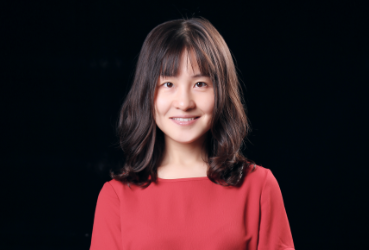In school, Dan Wu considered herself to
be a true mold breaker. In 2009, Wu Dan graduated from Zhejiang University
with a bachelor’s degree in biomedical engineering, ranking first among 92
students. She then continued her postgraduate and Ph.D. study in biomedical engineering at Johns Hopkins University, which is
the #1 program in the U.S. At the same time, she received her master's degree in
electrical and computer engineering. It is worth mentioning that it took three and a half years for Dan Wu to complete her Ph.D. study, while the
average length of the university's doctorate study is six years.
Just over one year after graduation, Dan Wu started
her career at Johns Hopkins University as an assistant professor. At that time,
she was the Principle Investigator on the R01, R21, and R03 projects from the National
Institutes of Health. However, in 2018, Dan Wu officially resigned from
Johns Hopkins University and returned to Zhejiang University through the
national "Young Thousand" program to start a new career.
As a biomedical engineer, Dan Wu
has devoted herself in the past 10 years to the development of magnetic resonance imaging (MRI), medical image analysis techniques, and their biomedical
applications. For example, the three-dimensional
high-resolution diffusion MRI sequence developed by her group has currently achieved the highest spatial resolution for in vivo neuroimaging at
high fields and it has been adopted by several esteemed research labs around
the word.
Besides, she is a pioneer
in the field of time-dependent diffusion MRI, and her team at Johns Hopkins
University is one of the first to transform this technology from pure physics
to in vivo imaging. Based on this technique, they overcame the physical
limit of MRI resolution and they could quantitatively map the microstructural tissue properties on a cellular scale and monitor pathological changes in
neurological diseases, such brain tumors and stroke. In addition, she is also an
expert on MRI atlas based medical big data analysis. Her work has been
published in the top journals in the field of MRI, including NeuroImage and Magnetic
Resonance in Medicine. To be specific, she has published a total of more
than 40 articles with 22 first-author and 8 last-author articles.
Now, Dan Wu develops imaging and post-processing
technologies for fetal brains and infant brains from two aspects: front-end
imaging technology and back-end image processing technology. She hopes that her
work on imaging sequence development will facilitate fast and robust acquisition
of fetal brain MRIs. Her team is working on collecting large samples from top
hospitals in the country to establish quantitative assessment indicators of early
brain development.




